
Paradox at play – Monash University Pharmacy Pavilion by Splinter Society
Paradox at play – Monash University Pharmacy Pavilion by Splinter Society
Share
For a project so outwardly simple, Monash University Pharmacy Pavilion had to achieve many things, which is what first attracted Melbourne-based architecture and interior design studio Splinter Society to the tender nearly five years ago.
Located on Monash University’s Parkville campus in Melbourne and visible to passersby on Royal Parade, the Monash University Pharmacy Pavilion is a new structure connecting an existing administrative building to the streetscape. The sheltered seating acts as an enhanced amenity where pharmacy students, faculty and the public can come together.
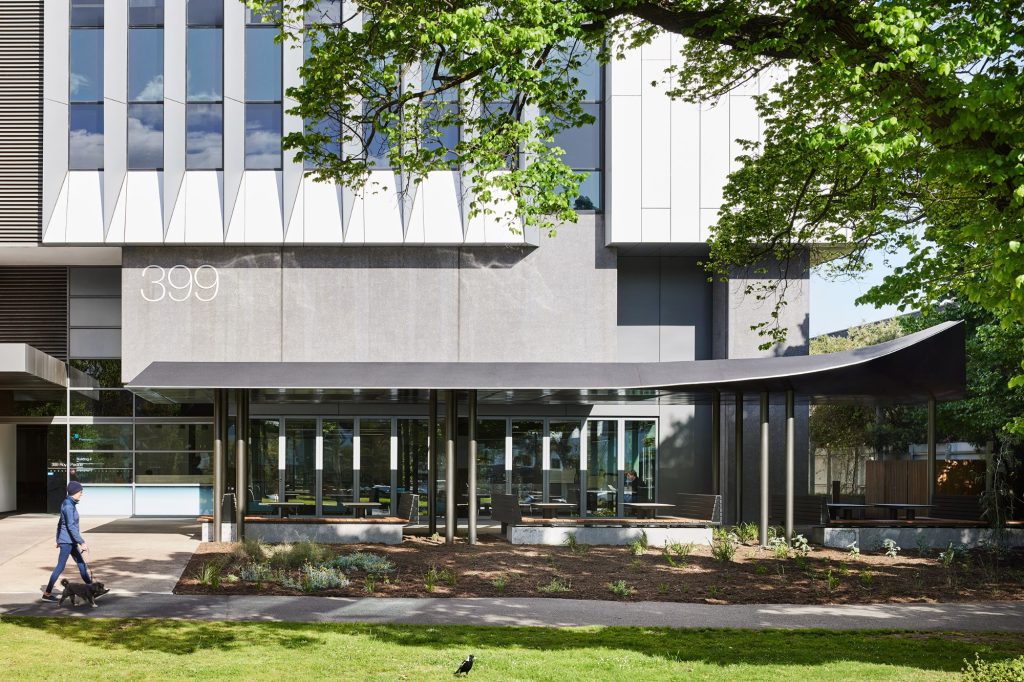
Responding to the modernist building behind it, the pavilion is a simple and elegant reinterpretation of the straight lines and wedge-shaped details expressed on the façade. But as an independent structure, Splinter Society architect and co-director Chris Stanley said it was equally important that the pavilion forged its own identity and subtle sculptural language.
“It was meant to sit as a shadow in front of that building and float a bit, but also be heavy,” he says.
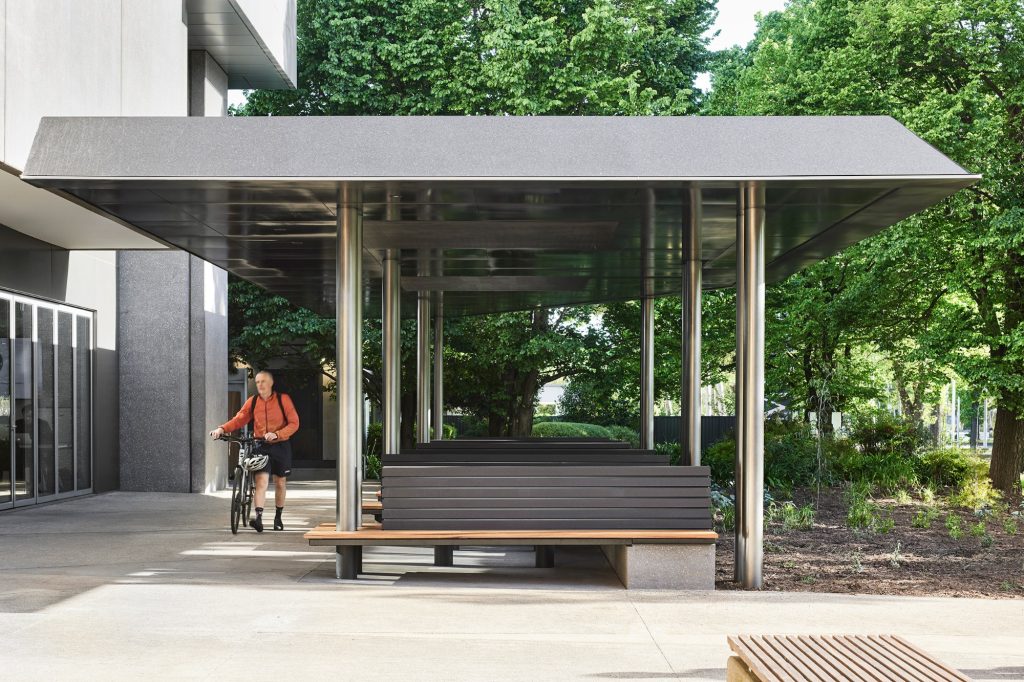
This familiar play with paradox makes the Monash University Pharmacy Pavilion a distinctly Splinter Society project.
The pavilion’s fixed furniture is made from hefty timber and recycled black plastic, while a sweeping steel structure forms the canopy. Stanley says it was a complex engineering task to get the columns and cantilevers to work around the underground carpark below.
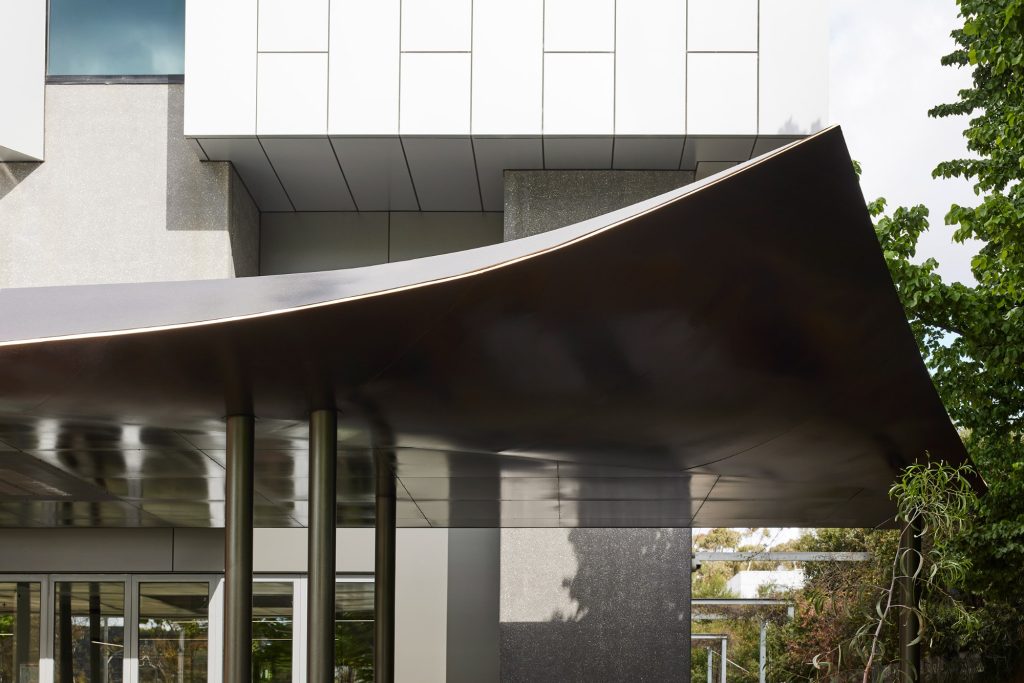
“The idea was to try and make it look simple and light when it was actually complicated and built with very heavy materials,” he says.
“We like tension between different things in a lot of our jobs, playing with two opposing conditions – heavy, light; hard, soft… That was quite a driver of this project.”
Monash University Pharmacy Pavilion’s people and purpose
Splinter Society’s artistic and practical vision for Monash University Pharmacy Pavilion responds to the needs of several stakeholders.
These stakeholders include Monash’s landscape, design and planning teams as well as the students and staff for whom the space was intended. The pavilion also provides outdoor seating to the adjacent café and opens to the street as an interface with the public, activating the entrance to a building that often looks like it’s empty.
Below the pavilion, a cluster layout provides flexible seating for groups and shelters up to 40 people in all weather conditions. In-built tables encourage groups and couples to meet or socialise and offer individuals a place to study alone.
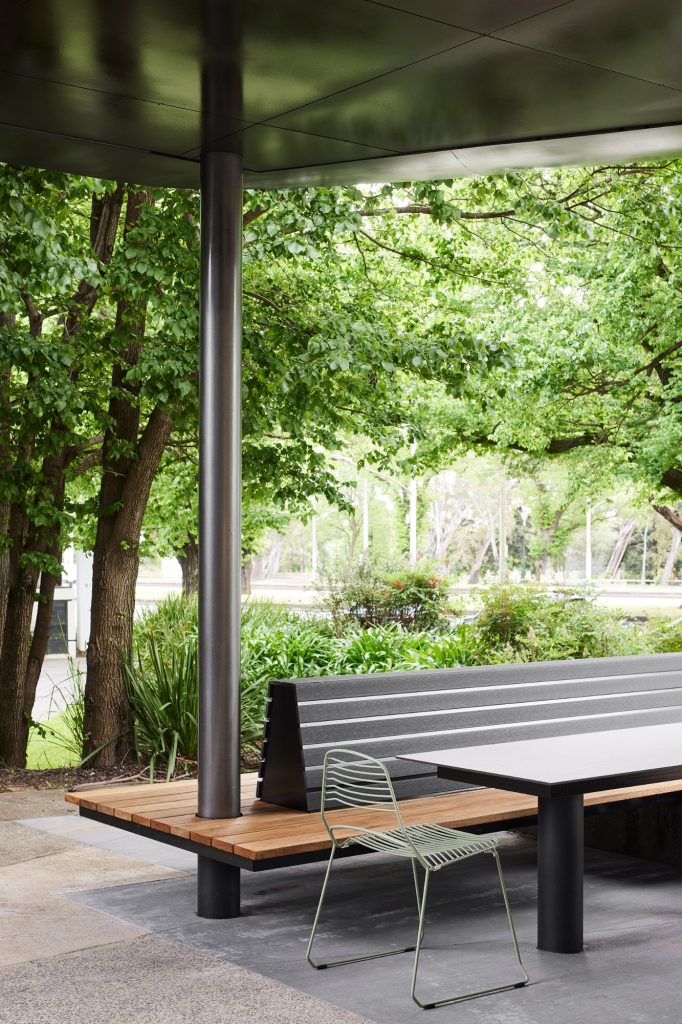
“It was designed to be occupied in lots of different ways and be a little bit prescriptive but not limiting in how people used it,” Stanley says.
There is even a low daybed to lie down on underneath the flick of the canopy and stare at the boulevard’s significant elm trees mirrored on the underside in highly reflective paint.
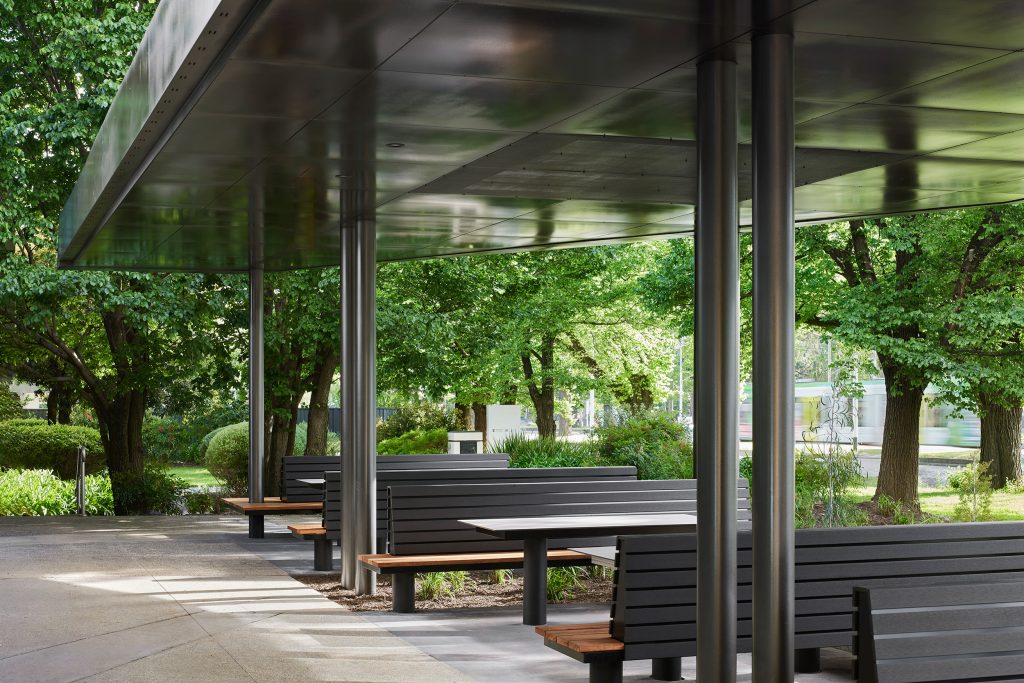
Adding to the lush environment, Splinter Society also worked in collaboration with landscape architecture firm Mala to reinstate and expand a significant Indigenous medicinal herb garden.
“We didn’t want to compete,” Stanley says.
“In a way, [the pavilion] was there to float within the landscape.”
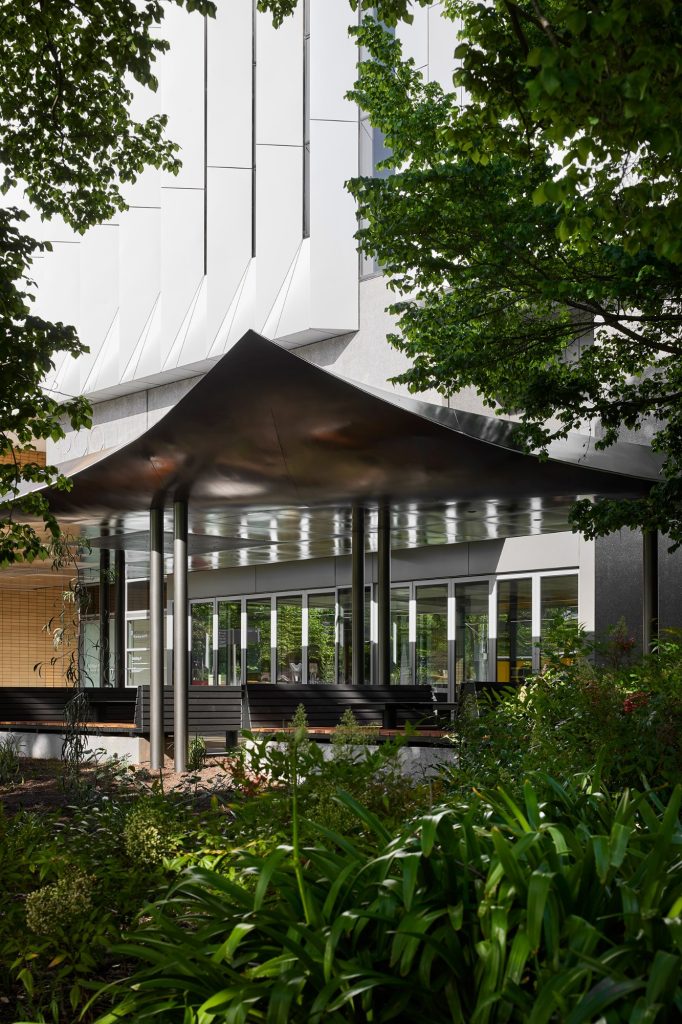
A new importance for outdoor study spaces
Monash’s new pavilion came with its fair share of consultation and red tape, given its location on a highly regarded boulevard, in front of an architecturally significant building and over the top of a garden that was important to the university. COVID-19 added another layer of complexity, delaying the completion of this on-again, off-again project over a five-year period.
It also imbued the project with new purpose, as the nascent conversation around the need for more outdoor study spaces – away from enclosed, sanitised environments – amplified during the pandemic.
“It sort of dovetailed into that post-COVID story for the better,” Stanley says.
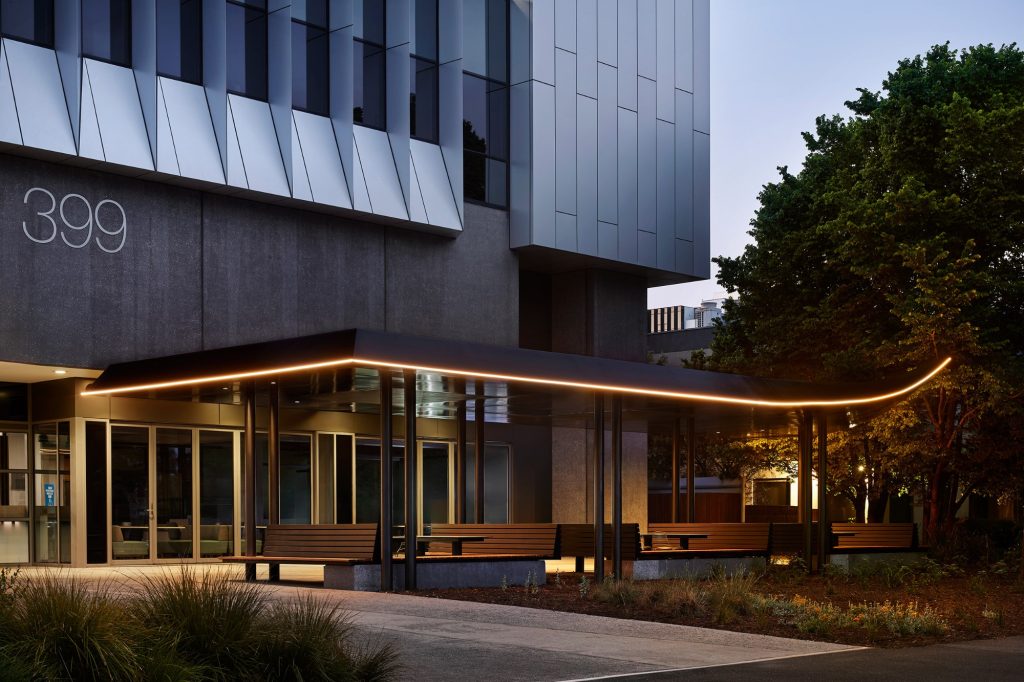
Photography by Sharyn Cairns.
Read more about Splinter Society’s paradoxical approach in our profile from 2022.
You Might also Like
























